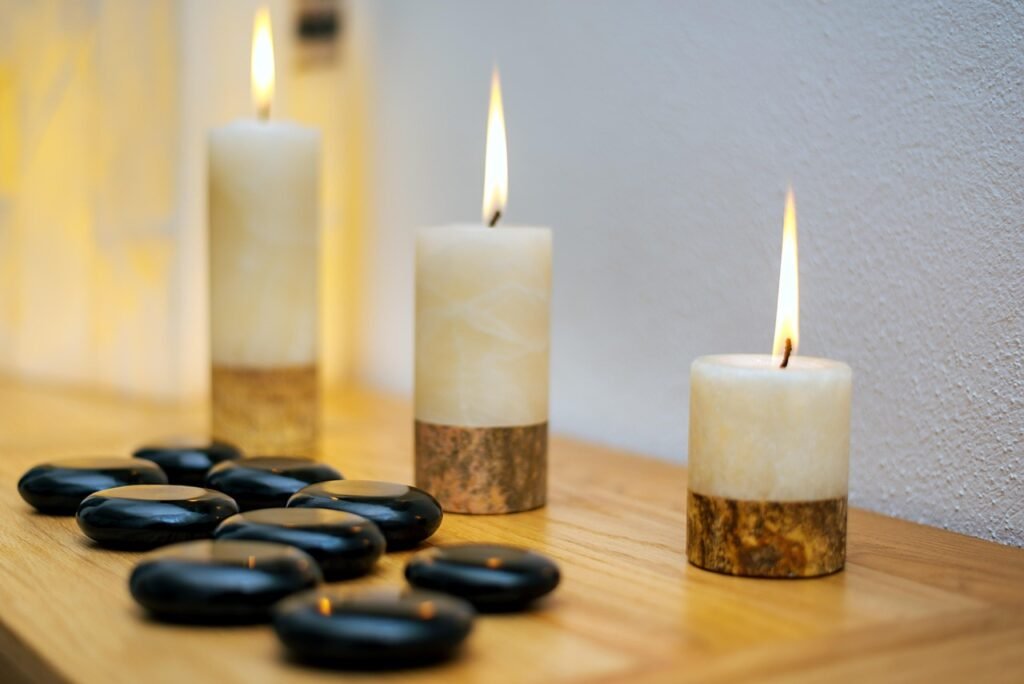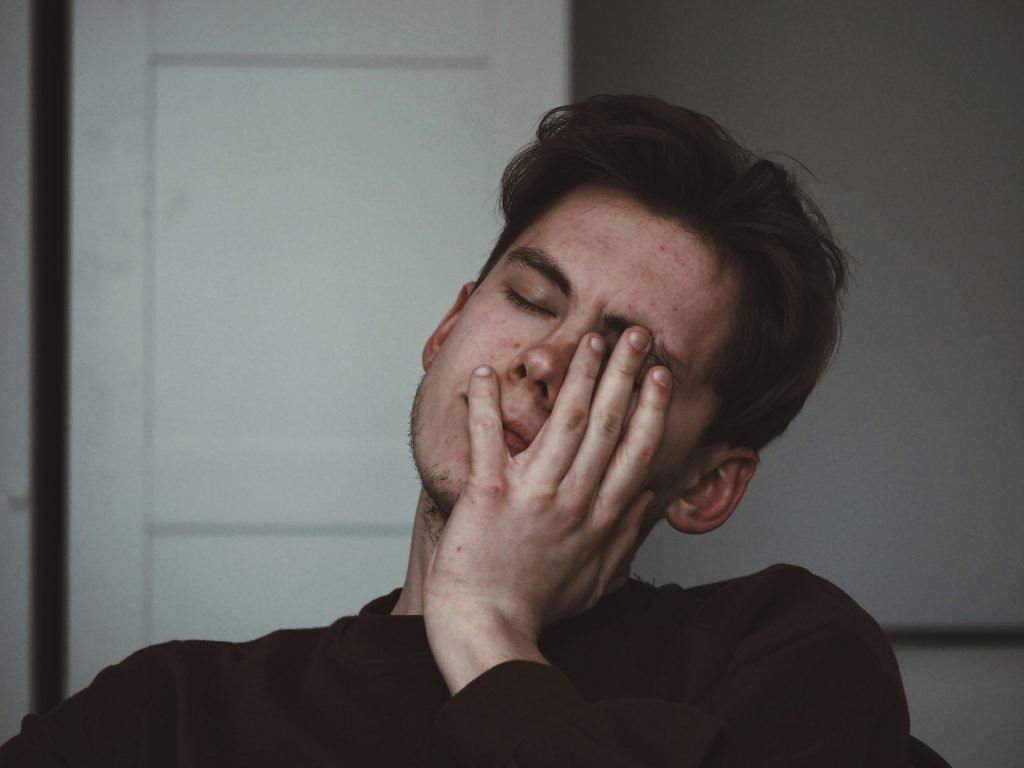Finding Calm Amid POTS Challenges
Postural Orthostatic Tachycardia Syndrome (POTS) can be unpredictable, often causing dizziness, fatigue, and heart rate fluctuations. Developing effective POTS symptom management strategies through relaxation techniques can help stabilize autonomic function and improve overall well-being.
POTS is a disorder of the autonomic nervous system that affects circulation, leading to an abnormal heart rate increase upon standing. Managing symptoms requires a holistic approach, and relaxation techniques play a crucial role in regulating the body’s stress response.
How Autonomic Dysfunction Impacts Stress
The autonomic nervous system (ANS) controls involuntary functions like heart rate, digestion, and blood pressure. In individuals with POTS, dysregulation in the ANS can make stress management more difficult, amplifying symptoms such as:
How often do you eat small meals to manage your symptoms?
- Increased tachycardia upon standing
- Fluctuating blood pressure and dizziness
- Difficulty in temperature regulation and fatigue
Understanding the Role of Relaxation in POTS
Regulation of Blood Pressure and Heart Rate
Stress activates the sympathetic nervous system, which can further exacerbate POTS symptoms. Relaxation techniques help counteract this by engaging the parasympathetic nervous system, encouraging:
- Lower heart rate fluctuations
- Better vascular regulation
- Improved circulation without sudden spikes in blood pooling
Reducing Stress-Induced Symptom Flare-Ups
Many individuals with POTS experience worsened symptoms during heightened physical or emotional stress. Controlled relaxation can:
- Dampen cortisol spikes, reducing inflammation
- Minimize lightheadedness and brain fog caused by stress responses
- Support stable autonomic function
Enhancing Sleep Quality and Overall Well-Being
Poor sleep is a common struggle among those with POTS, affecting symptom severity during the day. Relaxation techniques can improve sleep quality by:
- Lowering sympathetic overactivity before bedtime
- Encouraging deeper restorative sleep
- Reducing the likelihood of nocturnal heart rate surges
Best Relaxation Techniques for POTS Symptom Management
Managing POTS symptoms effectively involves integrating relaxation strategies that help regulate autonomic function, reduce stress, and improve circulation. The following techniques can be tailored to individual needs to enhance overall well-being.
Deep Breathing Exercises
Controlled breathing enhances vagal tone and reduces sympathetic nervous system activation, helping stabilize tachycardia and dizziness.
Diaphragmatic Breathing
Also known as belly breathing, this method involves slow, deep inhalations through the nose while expanding the diaphragm, followed by a controlled exhale through pursed lips. This activates the parasympathetic nervous system, fostering relaxation and improved circulation.
Box Breathing
A rhythmic breathing technique designed to regulate autonomic responses and minimize stress:
- Inhale for four seconds
- Hold for four seconds
- Exhale for four seconds
- Pause for four seconds
Repeating this cycle fosters relaxation and nervous system balance.

Meditation and Mindfulness
Mindfulness-based practices improve autonomic function and help alleviate symptom triggers caused by stress and overstimulation. By engaging in structured relaxation techniques, individuals can support nervous system balance, reduce sympathetic activation, and foster greater stability throughout the day.
Guided Meditation
Listening to structured audio sessions, such as nature sounds, ambient music, or guided mindfulness recordings, creates a calming effect that helps regulate cortisol spikes and reduces excessive sympathetic nervous system activity.
Guided meditation may include:
- Breathing-focused meditation – Encouraging slow, rhythmic breathing for nervous system relaxation.
- Visualization techniques – Using mental imagery to create a sense of safety and calm.
- Body-centered awareness – Shifting focus from external stressors to internal balance.
These meditative practices work well for those experiencing mental fog, sensory overload, or chronic tension from POTS symptoms.
Body Scan Meditation
A progressive relaxation technique that involves shifting awareness systematically through different body areas, helping to release stored tension, improve circulation, and promote deep relaxation.
Steps to practice body scan meditation effectively:
- Start by lying down or sitting in a comfortable position.
- Begin with slow, deep breathing, focusing on gradual inhales and exhales.
- Shift attention to the feet, observing sensations without judgment.
- Progressively move up through the legs, torso, arms, and head, noting areas of tension.
- Consciously release tension in tight areas while maintaining steady breathing.
This technique is particularly beneficial for individuals struggling with muscle fatigue, circulation issues, or autonomic instability.
Gentle Movement Therapy
Low-impact exercises support circulatory stability and help regulate autonomic responses without excessive physical strain.
Tai Chi
A slow, flowing movement practice that focuses on balance, posture control, and autonomic regulation, helping reduce dizziness and fatigue associated with POTS.
Tai Chi benefits include:
- Enhancing proprioception and spatial awareness.
- Improving vascular circulation without overexertion.
- Strengthening postural stability, aiding in blood pressure regulation.
Due to its gradual, controlled movements, Tai Chi offers a sustainable relaxation method for those managing orthostatic symptoms.
Restorative Yoga
Passive, supported poses encourage relaxation while minimizing exertion, helping ease symptoms of orthostatic intolerance and promote circulatory balance.
Effective restorative yoga poses:
- Legs-up-the-wall pose – Redistributes blood flow, reducing dizziness and fatigue.
- Reclined bound angle pose – Improves breathing efficiency while supporting relaxation.
- Supported child’s pose – Alleviates sensory overload and releases back tension.
Using props like bolsters and blankets ensures stability and comfort, allowing for longer relaxation periods.

Heat and Cold Therapy
Temperature regulation plays a key role in vascular tone management, offering relief from fluctuating POTS symptoms. For individuals with dysautonomia, sensitivity to temperature changes can directly impact circulatory stability, heart rate fluctuations, and orthostatic tolerance.
How Temperature Affects Autonomic Function
- Heat Exposure – Can cause excessive vasodilation, leading to blood pooling and increased fatigue.
- Cold Stimulation – Helps constrict blood vessels, potentially improving blood pressure stability and reducing lightheadedness.
Balancing heat and cold therapy in a controlled manner can support autonomic regulation and reduce symptom severity.
Warm Baths
Submersion in lukewarm water aids circulation without excessive vasodilation, preventing extreme blood pooling and stabilizing autonomic function.
Benefits of Warm Baths for POTS
- Encourages circulatory flow without triggering hypotension.
- Relaxes muscles and reduces nerve sensitivity, preventing excess sympathetic activation.
- Supports blood pressure regulation by minimizing abrupt shifts in vascular tone.
Adding Epsom salts to a warm bath provides additional benefits:
- Magnesium absorption may reduce muscle cramping and improve relaxation.
- Mild detoxification encourages fluid balance and prevents excessive dehydration.
To avoid orthostatic instability, it’s best to ensure that water temperature remains moderate, avoiding extreme heat. Slow transitions out of the bath prevent sudden dizziness.
Cold Compresses
Applying cooling packs to heat-sensitive areas, such as the neck, wrists, or feet, can help reduce lightheadedness, fatigue, and autonomic overstimulation.
How Cold Therapy Supports POTS Management
- Constricts blood vessels, helping stabilize blood pressure fluctuations.
- Reduces inflammation caused by excessive autonomic activation.
- Counters heat-induced fatigue, preventing symptom worsening.
Best Practices for Using Cold Therapy
- Place cold packs on pulse points (neck, wrists, behind knees) for optimal autonomic relief.
- Use cool damp towels instead of ice to prevent over-constriction.
- Avoid prolonged exposure to extreme cold, as it may trigger compensatory vasodilation later.
Cold therapy is especially useful after heat exposure, helping regulate temperature without further stressing the autonomic system.

GnarlyTree | NON-MEDICAL EQUIPMENT
Adjustable Beds and Pillows for POTS | Sleep Solutions for Circulatory Support
How Sleep Position Affects POTS Symptoms The Impact of Circulation Disruptions During Sleep The body's ability to regulate blood pressure and heart rate overnight is compromised in POTS patients, making...
Sound and Sensory Relaxation
Calming sensory experiences play a vital role in regulating autonomic function, particularly for individuals with POTS who experience sensory overload or heightened stress responses. Engaging with controlled auditory and olfactory stimuli can reduce overstimulation, promote relaxation, and enhance nervous system stability.
How Sensory Stimulation Impacts Autonomic Function
- Reduces sympathetic activation, helping lower heart rate fluctuations.
- Encourages parasympathetic responses, fostering deep relaxation.
- Filters out environmental stressors, limiting sensory-induced fatigue.
By integrating sound therapy and aromatherapy into daily routines, individuals can better balance autonomic function and alleviate nervous system dysregulation.
White Noise or Nature Sounds
Listening to ocean waves, rainfall, or ambient background sounds can help minimize sensory overload, improving focus and autonomic stability. These auditory relaxation techniques support neural desensitization, reducing the impact of external stressors.
Benefits of Sound Therapy for POTS
- Promotes cognitive calmness, reducing mental fog.
- Blocks disruptive background noise, preventing excessive sensory processing.
- Encourages rhythmic breathing, aligning with relaxation cues.
Choosing the Right Sound Environment
- White noise generators offer a steady, neutral audio backdrop.
- Nature sound apps provide immersive relaxation experiences.
- ASMR-style auditory cues can soothe overstimulated nerves.
Pairing sound therapy with mindfulness enhances overall effectiveness, ensuring deep autonomic relaxation.
Aromatherapy
Essential oils such as lavender, chamomile, and sandalwood activate olfactory pathways, triggering a natural relaxation response that supports autonomic balance. Since scent receptors directly link to the brain’s limbic system, certain aromas influence stress levels, improve circulatory regulation, and encourage nervous system equilibrium.
Best Essential Oils for Relaxation
- Lavender – Well-known for its calming and sleep-enhancing effects.
- Chamomile – Helps reduce inflammation and ease tension-related symptoms.
- Sandalwood – Supports grounding and stress relief through deep sensory relaxation.
How to Use Aromatherapy for POTS Symptom Relief
- Diffusing essential oils throughout a controlled environment for sustained relaxation.
- Applying diluted oils to pulse points (wrists, temples) to enhance calming effects.
- Using aromatherapy during meditation, pairing scent with breathing techniques for deeper autonomic stabilization.
Incorporating sound and scent therapy into daily routines allows for effective sensory regulation, reducing symptoms and encouraging overall nervous system stability.

Creating a Relaxation Routine for POTS
A structured relaxation routine can help stabilize autonomic function and minimize POTS symptom fluctuations throughout the day. By implementing targeted techniques at strategic times, you can optimize your body’s response to stress, circulation changes, and nervous system regulation.
How Routine-Based Relaxation Benefits POTS Management
- Encourages consistent autonomic balance by reducing stress-induced flare-ups.
- Helps reinforce vascular stability, preventing sudden blood pooling.
- Provides structured support to minimize sensory overstimulation.
A well-planned relaxation routine ensures that key techniques are applied at the right moments to promote systemic relief and long-term symptom management.
Structuring Daily Relaxation
A well-organized approach to relaxation ensures that key techniques are used at the most beneficial moments. Incorporating relaxation methods into a predictable schedule helps maximize their effectiveness.
Implement Deep Breathing Before Getting Out of Bed
Starting the day with controlled breathing helps regulate blood flow before transitioning from lying down to standing.
Effective breathing techniques include:
- Diaphragmatic breathing – Inhaling deeply through the nose, allowing the diaphragm to expand, and exhaling slowly through pursed lips to encourage parasympathetic activation.
- Box breathing – A structured breathing cycle of inhale-hold-exhale-pause (all for four counts) to stabilize autonomic regulation.
Practicing these breathing techniques before sitting up minimizes the risk of orthostatic instability and dizziness.
Schedule Mindfulness Sessions During Symptom-Prone Times
POTS symptoms may intensify during specific periods of the day due to fluctuations in activity levels, hydration, or posture changes. Scheduling short mindfulness breaks provides relief and prevents autonomic overstimulation.
Effective mindfulness strategies include:
- Guided meditation – Using structured audio sessions with nature sounds or breathing guidance to reset autonomic responses.
- Body scan techniques – Practicing systematic awareness of muscle groups to release stored tension and enhance circulatory control.
Mindfulness sessions are most effective when practiced during high-symptom periods or before engaging in physical activity.
Use Body-Positioning Techniques to Support Circulation
Since blood pooling and dysautonomia affect circulation, adjusting body positioning can help maintain vascular stability.
Optimal body-positioning strategies include:
- Elevating the legs while seated to improve venous return and prevent blood stagnation.
- Using compression garments to reduce excessive blood flow shifts and stabilize circulation.
- Lying down briefly if orthostatic symptoms intensify, allowing the body to recover before resuming upright activity.
Incorporating positioning techniques throughout the day reduces fluctuations in autonomic regulation, ensuring better control over POTS symptoms.
Avoiding Common Relaxation Mistakes
While relaxation methods can significantly improve POTS symptom management, certain mistakes may reduce their effectiveness. Ensuring that relaxation techniques are properly applied helps maximize their impact on autonomic stability and circulatory regulation.
How Ineffective Relaxation Can Disrupt Symptom Control
- Improper hydration may limit circulatory support, worsening dizziness.
- Overstimulation before sleep can trigger autonomic dysregulation.
- Skipping structured relaxation routines may reduce symptom relief consistency.
By identifying key relaxation mistakes, individuals can refine their routines for long-term autonomic balance.
Ignoring Hydration and Salt Intake
Maintaining proper electrolyte balance is crucial for circulatory support and autonomic regulation. Fluid intake and sodium levels play a direct role in vascular stability, helping manage blood pressure fluctuations that commonly occur in POTS.
Consequences of Poor Hydration in POTS
- Increased dizziness and fatigue due to low blood volume.
- Reduced effectiveness of relaxation techniques, limiting symptom relief.
- Higher risk of orthostatic intolerance, especially upon standing.
How to Optimize Hydration for Relaxation Success
- Consume electrolyte-enhanced fluids, such as water with added sodium or electrolyte tablets.
- Maintain consistent fluid intake throughout the day, rather than drinking large amounts at once.
- Pair hydration habits with relaxation methods, ensuring better systemic balance.
Ignoring hydration may counteract relaxation benefits, making structured electrolyte intake essential for autonomic stability.
Overstimulating Activities Before Sleep
Engaging in high-stimulation activities—such as scrolling on bright screens or performing strenuous tasks—close to bedtime can disrupt autonomic stability and sleep patterns. Overstimulation triggers the sympathetic nervous system, potentially worsening tachycardia and sensory overload before sleep.
Why Overstimulation Impairs Relaxation and Sleep Quality
- Blue light exposure suppresses melatonin, delaying sleep onset.
- Intense mental engagement before bedtime raises cortisol levels, preventing deep relaxation.
- Physical exertion too close to sleep keeps the nervous system active, delaying parasympathetic recovery.
How to Prevent Overstimulation Before Sleep
- Reduce screen exposure at least one hour before bedtime.
- Replace digital engagement with sound therapy or aromatherapy for deeper relaxation.
- Implement low-intensity activities such as guided meditation, breathing techniques, or sensory relaxation.
By limiting evening overstimulation, individuals can enhance autonomic recovery, ensuring more effective relaxation and symptom management.

GnarlyTree | DIET AND EATING
Food Sources for POTS | Nourishing Your Body with Dysautonomia
Understanding the best food sources of essential Nutrients for POTS can play a critical role in symptom management.
Frequently Asked Questions
What relaxation methods work best for sudden POTS flare-ups?
Deep breathing exercises and cooling strategies can help stabilize symptoms quickly.
Can meditation lower heart rate spikes in POTS?
Yes, regular meditation helps regulate autonomic function and reduce stress-induced tachycardia.
Is yoga safe for people with severe POTS symptoms?
Gentle, restorative yoga is beneficial, but avoiding intense poses is important.
How does hydration affect relaxation techniques in POTS?
Proper fluid balance enhances circulation, making relaxation methods more effective.
Can stress alone trigger POTS symptoms?
Yes, stress increases sympathetic nervous system activity, worsening symptoms.
Should relaxation techniques be used before or after standing?
Using them before standing can help stabilize autonomic function and prevent dizziness.
Do essential oils help with POTS symptom relief?
Aromatherapy can support relaxation but shouldn’t replace core symptom management strategies.
Is listening to music an effective relaxation strategy?
Yes, soothing sounds help regulate autonomic responses, reducing nervous system overstimulation.
How often should relaxation techniques be practiced for POTS management?
Daily practice enhances consistency and effectiveness in symptom control.
Can relaxation techniques improve sleep disturbances in POTS?
Yes, structured relaxation methods support better sleep quality and reduce nighttime fluctuations.
Final Thoughts
Managing POTS symptoms requires a holistic approach, and relaxation techniques play an essential role in stabilizing autonomic function. By implementing structured strategies—such as breathing exercises, mindfulness, movement therapy, and sensory relaxation—individuals can reduce stress-related flare-ups and improve their overall quality of life.
Finding the right balance of relaxation methods tailored to your unique symptoms is key. What works for one person may not be ideal for another, so trial and adjustment can help refine a routine that provides optimal relief. Consistency in applying these techniques over time will strengthen their effectiveness, making symptom management more sustainable.
Ultimately, relaxation isn’t just about symptom control—it’s about enhancing daily comfort, resilience, and well-being, allowing individuals with POTS to navigate life with greater ease and stability.



